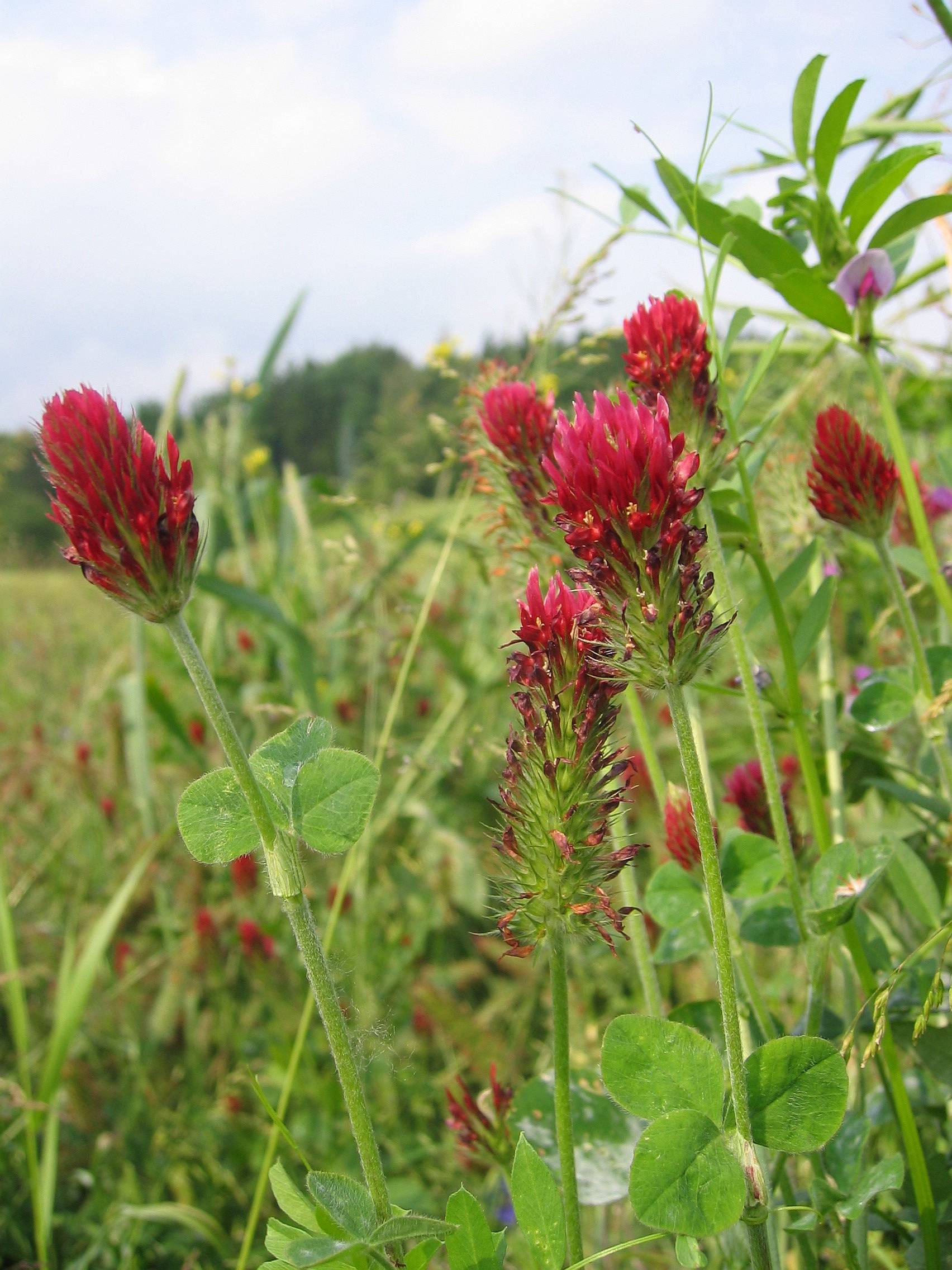- Crimson clover
Taxobox
name = Crimson clover
status =

image_width = 240px
image_caption = Crimson clover
regnum =Plant ae
divisio = Magnoliophyta
classis =Magnoliopsida
ordo =Fabales
familia =Fabaceae
subfamilia =Faboideae
genus = "Trifolium"
species = "T. incarnatum"
binomial = "Trifolium incarnatum"
binomial_authority = L.Crimson clover ("Trifolium incarnatum"), also known as Italian clover, is a species of
clover in the familyFabaceae , native to most ofEurope . The species name "incarnatum" means "blood red".This upright annual herb grows to 20-50 cm tall, unbranched or branched only at the base. The leaves are trifoliate with a long petiole, each leaflet hairy, 8-16 mm across, with a truncated or bilobed apex. The
flower s are produced throughout the spring and summer, rich red or crimson, congested on an elongated spikeinflorescence 3-5 cm tall and 1.5 cm broad; the individualflower s are up to 10-13 mm long and have five petals. The banner of each flower does not sit upright, but folds forward.Cultivation and uses
Crimson clover is widely grown as a
protein -rich forage crop forcattle and otherlivestock . It can typically be found in forest margins, fields and roadsides.It is sown as quickly as possible after the removal of a grain crop at the rate of 20-22 kg/ha. It is found to succeed better when only the surface of the soil is stirred by the scarifier and harrow than when a ploughing is given. It grows rapidly in spring, and yields an abundant crop of green food, peculiarly palatable to live stock. It is also suitable for making into hay. Only one cutting, however, can be obtained, as it does not shoot again after being mown.
In
Great Britain it is most valuable in the south, less successful in northern regions.It has been introduced into the
United States , originally as forage for cattle. It is often used for roadsideerosion control, as well as beautification, even though it tends to eliminate all other desirable spring and early-summer species of native vegetation in the area which it is planted.References and external links
* [http://rbg-web2.rbge.org.uk/cgi-bin/nph-readbtree.pl/feout?FAMILY_XREF=&GENUS_XREF=Trifolium&SPECIES_XREF=incarnatum&TAXON_NAME_XREF=&RANK=species Flora Europaea: "Trifolium incarnatum"]
* [http://www.ecoflora.co.uk/search_species2.php?plant_no=810570620 Ecoflora: "Trifolium incarnatum"]
* [http://www.fao.org/ag/AGP/AGPC/doc/GBASE/DATA/PF000502.HTM FAO factsheet: "Trifolium incarnatum"]
* [http://plants.usda.gov/java/profile?symbol=TRIN3 USDA: Natural Resources Conservation Service]
* Ajilvsgi, Geyata. (2003). "Wildflowers of Texas." Shearer Publishing, Fredericksburg, Texas (USA). ISBN 0-940672-73-1.
* [http://wisplants.uwsp.edu/scripts/detail.asp?SpCode=TRIINC Robert W. Freckmann Herbarium, University of Wisconsin] Page with several photos.
Wikimedia Foundation. 2010.
